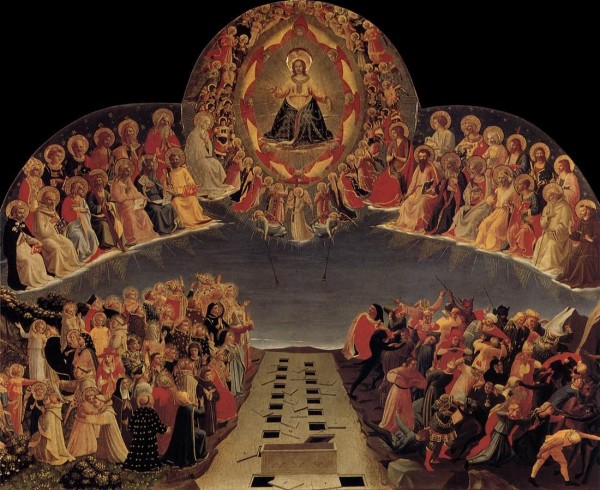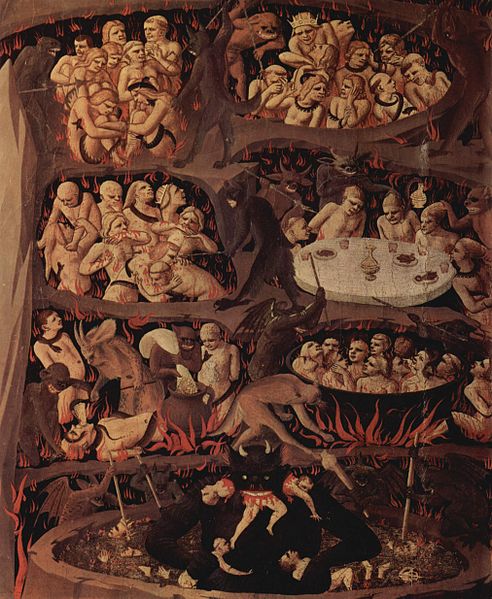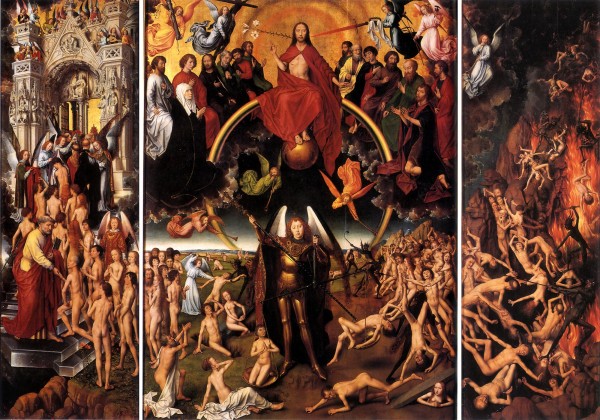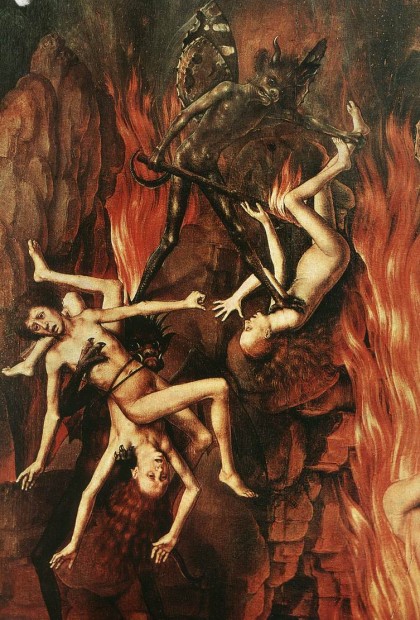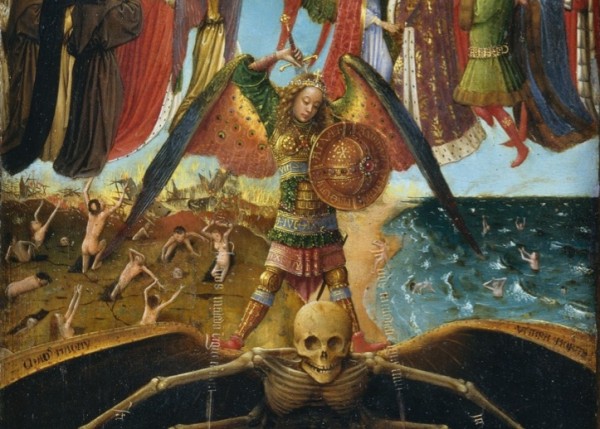
Jan van Eyck and Workshop Assistant, Crucifixion and Last Judgement (c. 1430 – 40) Diptych detail. Oil on canvas, transferred from wood
Oh how we long for the End! Is there not something slightly disappointing about waking up to an unchanged world after everything was supposed to be snuffed out? That small sense of dread, the apocalypse has not arrived and our daily routines resume as if nothing at all happened (because nothing at all did happen). It’s a fantasy, the End of Days, and artists have been picturing it for centuries. Here is a selection of Doom paintings from the mid 1440s, a time rife with images of purgatory, hell and the struggle to make it to the other side.

Jan van Eyck and Workshop Assistant, Crucifixion and Last Judgement (c. 1430 – 40) Diptych detail. Oil on canvas, transferred from wood
Flemish painter Jan van Eyck created a highly detailed version of hell. In this non-hierarchical vision, bodies writhe against one another while amphibious beasts tug at and swallow whole fleshy sinners.
At around the same time Jan van Eyck was creating his image of the End, Italian artist Fra Angelico was painting his fantasy. Here, God reigns in an orb of golden light, dividing the sinners from the saved. There is something truly frightening about the central line of tombs cracked open, for even the dead are to be judged.
Pan out of the image, and to the right is Angelico’s depiction of hell. Cannibalism seems to be the theme here—the damned eat the damned. Or the ghouls and monsters of the underworld cook them up in a tasty soup of sin.
German painter Hans Memling created his depiction of the End in bright saturated colors against a dark sky. As Jesus hovers above, St. Michael weighs the souls, flinging the sinners to the left and the saved to the right. Notice there seems to be an abundance of sinners.
And what happens, once in hell? Oh the usual! Fire and creepy devil monsters poking the damned. Sure it’s scary, but even the artists of the 15th century understood that the End contains entertainment value as well as an opportunity to contemplate the present moment. Perhaps we can also imagine that ends and beginnings are not so different from one another. That is to say, we desire endings for the potential they hold for new starts in this thriving world.
____________
Katie Geha is a writer, curator and art historian living in Austin, Texas. She grew up in Ames, Iowa and received her MA in art history from the School of the Art Institute of Chicago and her PhD in art history from the University of Texas, Austin.


